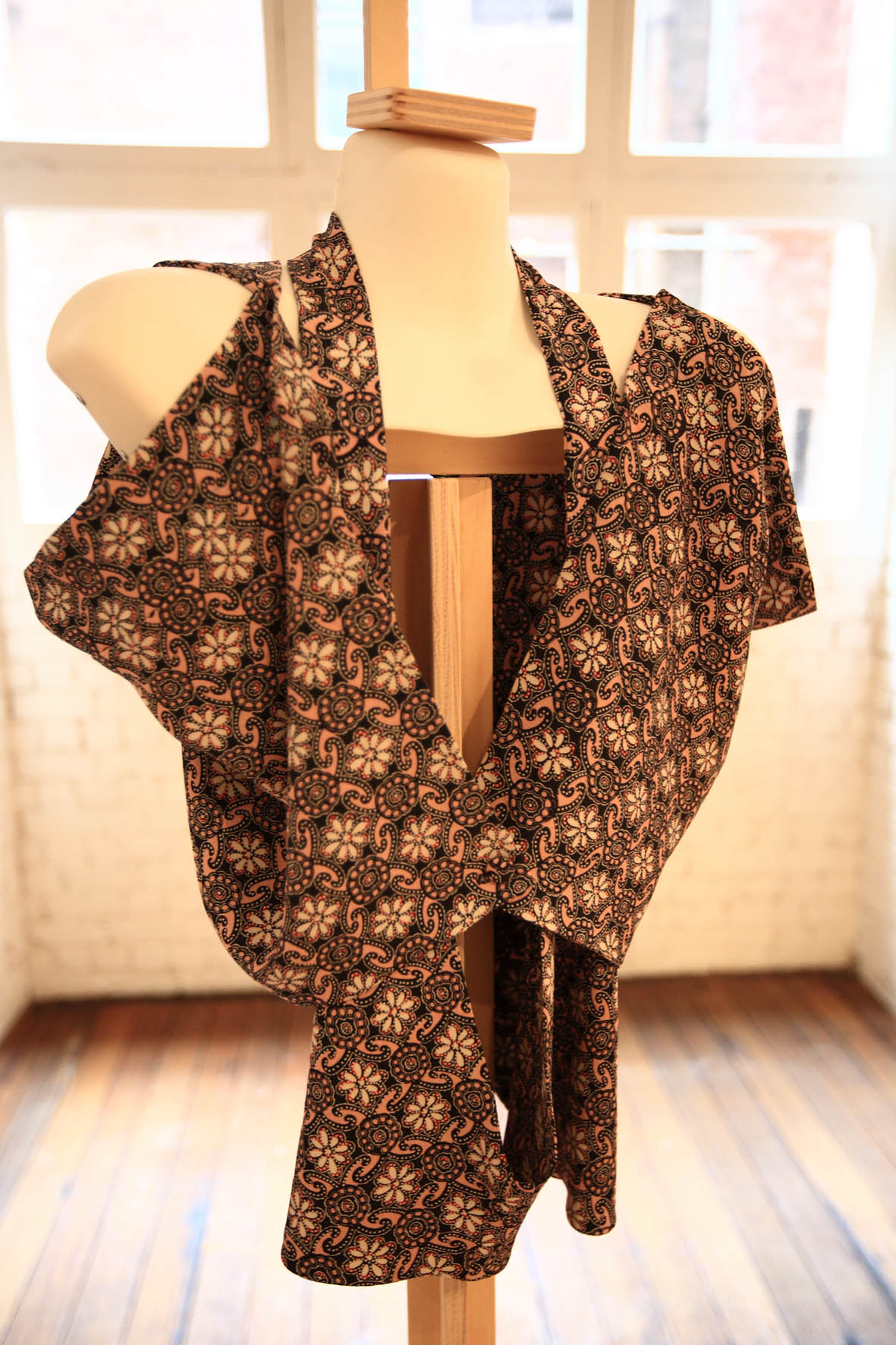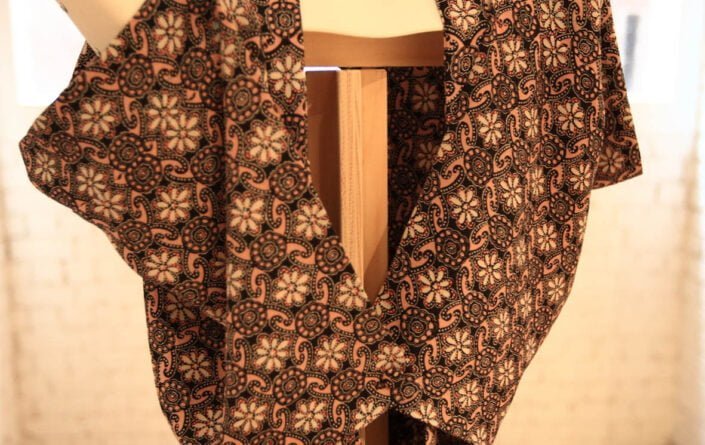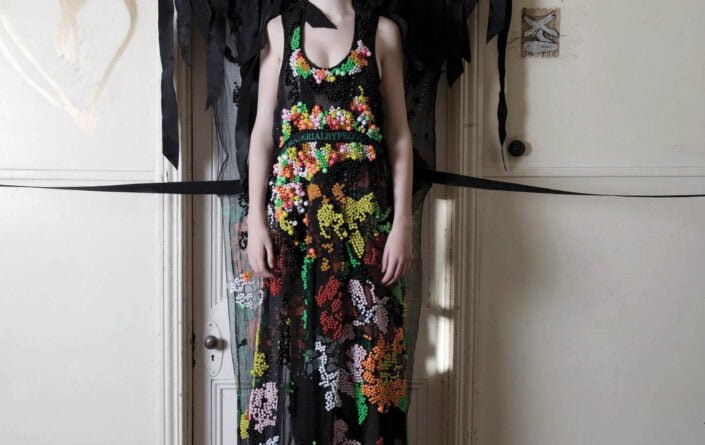Paula Dunlop
Dunlop explores the use of chance as a system for designing clothes. The deliberate staging of chance procedures to generate pattern shapes distances the designer from achieving an overly controlled outcome. Dunlop’s systems include: folding fabrics while blindfolded – dropping old toiles, pattern pieces or textile scraps (that don’t always land on the fabric completely); calling on an assistant to randomly select pattern pieces in a lottery-style process; or by a self-imposed rule such as determining that an op-shop visit on a particular day will uncover a garment that becomes a pattern.
Dunlop’s garments all incorporate experimental elements. She reworks found and new materials using a systematic methodology that synthesises tailoring and chance, or known and unknown approaches to making. Dunlop’s discoveries and intuitive responses have been woven into a practice to form systems for making in the style of Jean Arp or John Cage. She refers to her work as a kind of ‘slow’ fashion; the figure of chance protracts the process of garment construction as she moves back and forth from table-strewn pattern pieces to mannequin stand to layer and create her collections. She desires chance for the ‘order’ it creates and understands it as a form of interpretation. For Dunlop, techniques of chance and bricolage allow for works to be ‘found’ during the process of making.
2008Dunlop explores the use of chance as a system for designing clothes. The deliberate staging of chance procedures to generate pattern shapes distances the designer from achieving an overly controlled outcome. Dunlop’s systems include: folding fabrics while blindfolded – dropping old toiles, pattern pieces or textile scraps (that don’t always land on the fabric completely); calling on an assistant to randomly select pattern pieces in a lottery-style process; or by a self-imposed rule such as determining that an op-shop visit on a particular day will uncover a garment that becomes a pattern.
Dunlop’s garments all incorporate experimental elements. She reworks found and new materials using a systematic methodology that synthesises tailoring and chance, or known and unknown approaches to making. Dunlop’s discoveries and intuitive responses have been woven into a practice to form systems for making in the style of Jean Arp or John Cage. She refers to her work as a kind of ‘slow’ fashion; the figure of chance protracts the process of garment construction as she moves back and forth from table-strewn pattern pieces to mannequin stand to layer and create her collections. She desires chance for the ‘order’ it creates and understands it as a form of interpretation. For Dunlop, techniques of chance and bricolage allow for works to be ‘found’ during the process of making.
2008



